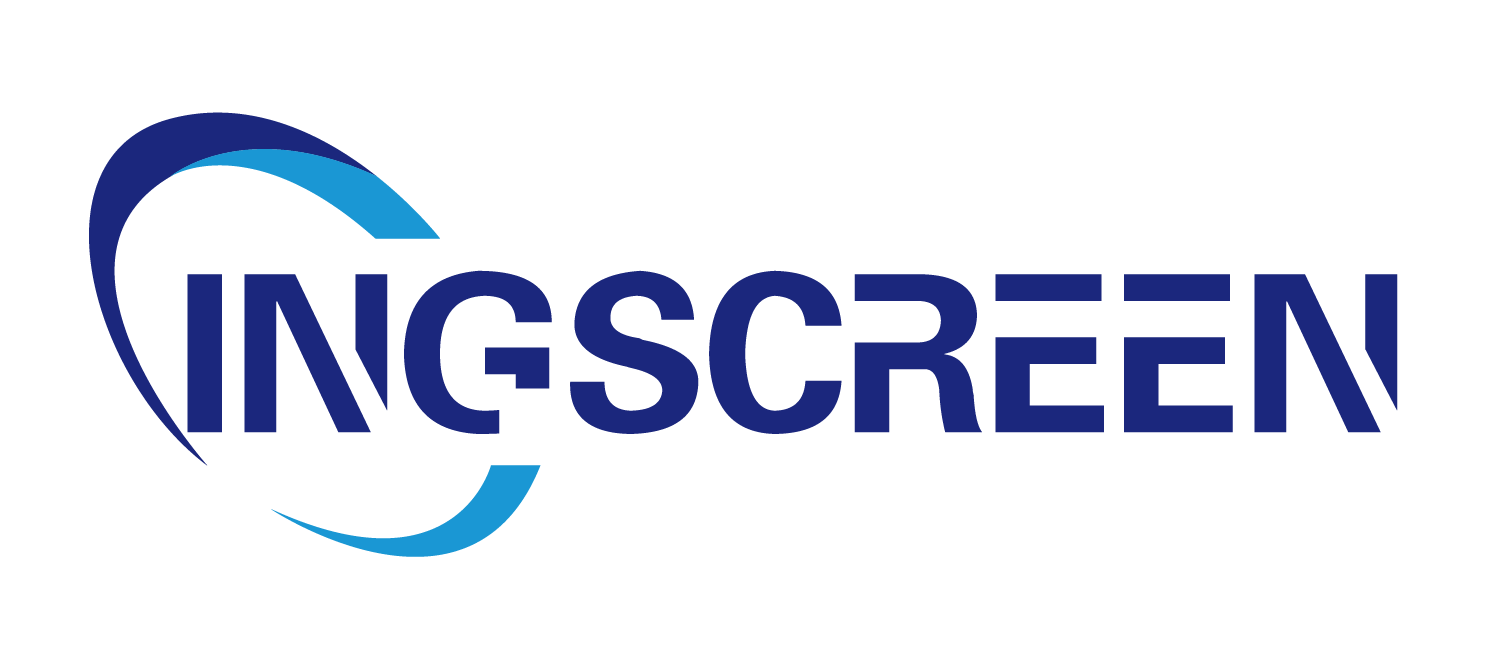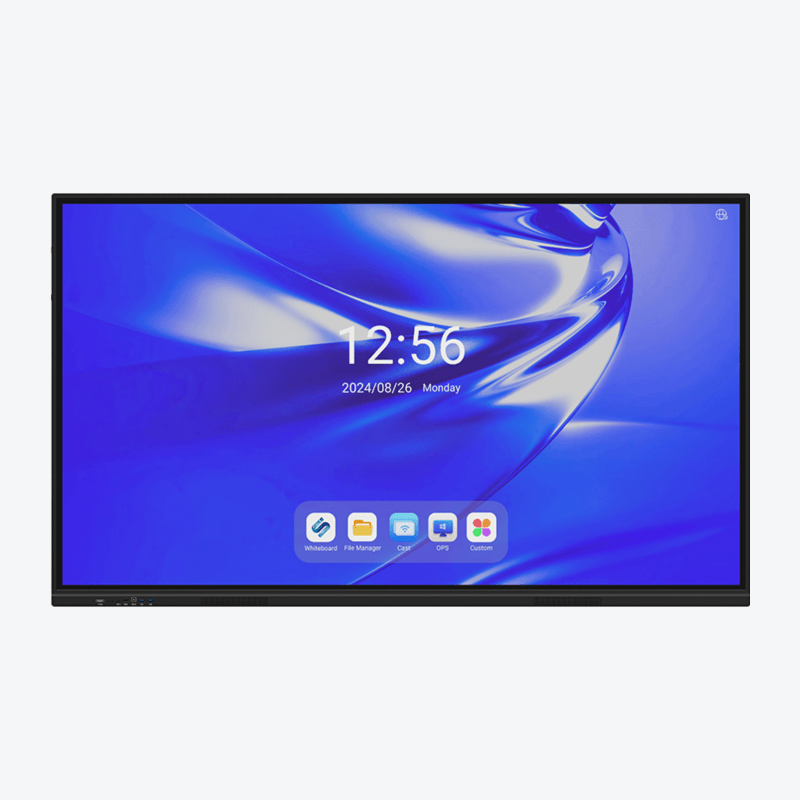आधुनिक मार्केटिंग में डिजिटल डिस्प्ले समाधानों का विकास
डिजिटल विपणन का दृश्य अब तक की तुलना में अतुलनीय गति से विकसित हो रहा है, और विज्ञापन प्लेयर आधुनिक प्रचार रणनीतियों की रीढ़ बनकर उभरे हैं। ये उन्नत डिजिटल डिस्प्ले समाधान व्यवसायों के अपने लक्षित दर्शकों के साथ संवाद करने के तरीके को बदल चुके हैं, गतिशील सामग्री वितरण और वास्तविक समय में अभियान अनुकूलन को सक्षम कर रहे हैं। जैसे हम विज्ञापन प्लेयर्स की रूपांतरकारी विशेषताओं में गहराई से जाते हैं, यह स्पष्ट हो जाता है कि वे आज के प्रतिस्पर्धी विपणन वातावरण में अनिवार्य उपकरण क्यों बन गए हैं।
पेशेवर विज्ञापन प्लेयर्स के मुख्य घटक
अग्रणी सामग्री प्रबंधन प्रणालियां
प्रभावी विज्ञापन प्लेयर्स के मूल में एक दृढ़ सामग्री प्रबंधन प्रणाली होती है जो मार्केटिंग संपत्तियों पर चिकना नियंत्रण को सक्षम करती है। यह प्रणाली मार्केटर्स को कई प्रदर्शनों पर न्यूनतम प्रयास के साथ सामग्री अपलोड, अनुसूचित और संशोधित करने की अनुमति देती है। सहज इंटरफ़ेस सुनिश्चित करता है कि गैर-तकनीकी टीम सदस्य भी जटिल डिजिटल अभियानों को कुशलता से प्रबंधित कर सकें, जबकि उन्नत उपयोगकर्ता स्वचालित सामग्री अद्यतन के लिए API एकीकरण का उपयोग कर सकते हैं।
आधुनिक विज्ञापन प्लेयर्स में व्यापारों को पूरे दिन विशिष्ट दर्शक वर्गों को लक्षित करने की क्षमता संचित होती है। चाहे यह उच्चतम खरीदारी के घंटों के आधार पर सामग्री को समायोजित करना हो या विभिन्न समय क्षेत्रों में प्रदर्शनों को सिंक्रनाइज़ करना हो, ये प्रणालियां यह सुनिश्चित करती हैं कि सही संदेश सही समय पर सही दर्शकों तक पहुंचे।
दूरस्थ प्रबंधन क्षमताएँ
विश्व के किसी भी कोने से विज्ञापन प्लेयर्स को नियंत्रित करने की क्षमता ने व्यवसायों के डिजिटल विपणन अभियानों के प्रबंधन के तरीके को ही बदल दिया है। दूरस्थ प्रबंधन सुविधाएं मार्केटिंग टीमों को बाजार की बदलती परिस्थितियों के अनुसार त्वरित प्रतिक्रिया देने, वास्तविक समय में सामग्री को अपडेट करने और सभी प्रदर्शन स्थानों पर संदेशों की एकरूपता सुनिश्चित करने की अनुमति देती हैं। यह स्तर का नियंत्रण उन व्यवसायों के लिए विशेष रूप से मूल्यवान हो गया है जो कई स्थानों पर संचालित हो रहे हैं या बड़े पैमाने पर विज्ञापन नेटवर्क का प्रबंधन कर रहे हैं।
इन दूरस्थ प्रबंधन प्रणालियों में एकीकृत सुरक्षा प्रोटोकॉल संवेदनशील सामग्री की रक्षा करते हैं और अनधिकृत पहुंच को रोकते हैं। उन्नत एन्क्रिप्शन और मल्टी-फैक्टर प्रमाणीकरण यह सुनिश्चित करते हैं कि केवल अधिकृत कर्मचारी ही प्रदर्शन सामग्री में परिवर्तन कर सकें, विपणन अभियानों की अखंडता बनाए रखते हुए ब्रांड प्रतिष्ठा की रक्षा करना।
अंतःक्रियात्मक सुविधाएं और दर्शकों की भागीदारी
टच-स्क्रीन एकीकरण
आधुनिक विज्ञापन प्लेयर उन्नत टच-स्क्रीन क्षमताओं के माध्यम से इंटरैक्टिव अनुभव बनाने में उत्कृष्टता दिखाते हैं। ये सिस्टम ग्राहकों को उत्पाद कैटलॉग देखने, विस्तृत जानकारी प्राप्त करने और सीधे प्रदर्शन इकाई के माध्यम से खरीदारी करने की अनुमति देते हैं। स्पर्श इंटरैक्शन ब्रांड अनुभव को अधिक स्मरणीय बनाता है तथा ग्राहक पसंद और व्यवहार पैटर्न के बारे में मूल्यवान डेटा उपलब्ध कराता है।
इंटरैक्टिव सुविधाएं साधारण टच कार्यक्षमता से आगे बढ़कर जेस्चर रिकग्निशन और समीपता सेंसर्स तक फैली हुई हैं, जिससे विज्ञापन प्लेयर ग्राहक के स्थानांतरण और भागीदारी के स्तर के अनुसार प्रतिक्रिया कर सकते हैं। यह तकनीक दर्शकों के व्यवहार के अनुसार समय-समय पर समायोजित होने वाले गतिशील, आकर्षक प्रदर्शन बनाती है।
सोशल मीडिया इंटीग्रेशन
सोशल मीडिया फीड्स का विज्ञापन प्लेयर्स में सुचारु एकीकरण ब्रांड इंगेजमेंट और उपयोगकर्ता-उत्पन्न सामग्री के प्रचार के लिए नए अवसर पैदा कर दिया है। ये सिस्टम वास्तविक समय में सोशल मीडिया अपडेट्स, ग्राहक समीक्षाएं और हैशटैग अभियान प्रदर्शित कर सकते हैं, ब्रांड के बारे में डिजिटल डिस्प्ले और ऑनलाइन बातचीत के बीच एक गतिशील कनेक्शन बनाते हुए।
सोशल प्रूफ और सामुदायिक भागीदारी को शामिल करके, विज्ञापन प्लेयर्स व्यवसायों को ब्रांड कहानी कहने में ग्राहकों की भागीदारी को प्रोत्साहित करते हुए भरोसा और विश्वसनीयता बनाने में मदद करते हैं। यह एकीकरण सोशल मीडिया मेट्रिक्स के माध्यम से अभियान प्रदर्शन और दर्शकों की प्रतिक्रिया के बारे में मूल्यवान अंतर्दृष्टि भी प्रदान करता है।
विश्लेषण और प्रदर्शन ट्रैकिंग
वास्तविक समय में मेट्रिक्स
एडवांस्ड विज्ञापन प्लेयर्स में व्यूअर एंगेजमेंट, इंटरैक्शन दरों और सामग्री प्रदर्शन को वास्तविक समय में ट्रैक करने वाले व्यापक विश्लेषणात्मक उपकरण शामिल हैं। ये मेट्रिक्स व्यवसायों को यह समझने में मदद करते हैं कि उनके दर्शकों के साथ कौन सी सामग्री अच्छा प्रतिक्रिया दे रही है और इसके अनुसार अपनी विपणन रणनीतियों को अनुकूलित करते हैं। अभियान प्रभावशीलता को तुरंत मापने की क्षमता त्वरित समायोजन और बेहतर ROI के लिए अनुमति देती है।
फुटफॉल काउंटर्स और जनसांख्यिकीय विश्लेषण उपकरणों के साथ एकीकरण से दर्शक संरचना और व्यवहार पैटर्न के बारे में गहरी जानकारी प्राप्त होती है। यह डेटा व्यवसायों को अपनी लक्षित रणनीतियों को सुदृढ़ करने और विशिष्ट ग्राहक वर्गों के लिए अधिक प्रभावी सामग्री बनाने में सक्षम बनाता है।
कस्टम रिपोर्टिंग टूल्स
विकसित रिपोर्टिंग क्षमताएं मार्केटिंग टीमों को विस्तृत प्रदर्शन विश्लेषण तैयार करने और संगठन के सभी स्तरों पर अंतर्दृष्टि साझा करने की अनुमति देती हैं। कस्टम डैशबोर्ड को विशिष्ट KPIs की निगरानी के लिए कॉन्फ़िगर किया जा सकता है, जबकि स्वचालित रिपोर्ट उत्पन्न करना समय बचाता है और प्रचार प्रदर्शन की निरंतर निगरानी सुनिश्चित करता है। ये उपकरण व्यवसायों को अपने डिजिटल मार्केटिंग निवेशों के मूल्य को प्रदर्शित करने और भावी प्रचारों के बारे में डेटा आधारित निर्णय लेने में सहायता करते हैं।
उन्नत विज्ञापन प्लेयर्स में अक्सर AI-संचालित पूर्वानुमानित विश्लेषण शामिल होता है जो प्रवृत्तियों का पूर्वानुमान लगा सकता है और सामग्री अनुकूलन की सिफारिश कर सकता है। यह भविष्य-दृष्टिकोण व्यवसायों को बाजार के परिवर्तनों से आगे रहने और प्रतिस्पर्धी लाभ बनाए रखने में मदद करता है।
स्केलेबिलिटी और भविष्य-सबूत बनाना
हार्डवेयर सुसंगतता
आधुनिक विज्ञापन प्लेयर्स को पारंपरिक एलसीडी स्क्रीन से लेकर अत्याधुनिक एलईडी वॉल तक, डिस्प्ले हार्डवेयर की एक विस्तृत श्रृंखला के साथ काम करने के लिए डिज़ाइन किया गया है। यह लचीलापन यह सुनिश्चित करता है कि व्यवसाय अपनी डिस्प्ले तकनीक को अपग्रेड कर सकें बिना अपनी सामग्री प्रबंधन प्रणाली को पूरी तरह से बदले। सिंगल डिस्प्ले से लेकर बड़े नेटवर्क तक स्केल करने की क्षमता बनाए रखते हुए स्थिर प्रदर्शन सुनिश्चित करना बढ़ते व्यवसायों के लिए महत्वपूर्ण है।
विभिन्न मीडिया प्रारूपों और रिज़ॉल्यूशन के लिए समर्थन यह सुनिश्चित करता है कि विज्ञापन प्लेयर वर्तमान और भावी सामग्री आवश्यकताओं को संभाल सकें। यह अनुकूलनीयता डिजिटल विपणन बुनियादी ढांचे में निवेश की रक्षा करती है और व्यवसायों को उभरती हुई डिस्प्ले तकनीकों का लाभ उठाने की अनुमति देती है।
एकीकरण क्षमता
मौजूदा व्यावसायिक प्रणालियों और तीसरे पक्ष के अनुप्रयोगों के साथ एकीकरण करने की क्षमता विज्ञापन प्लेयरों को एक व्यापक विपणन प्रौद्योगिकी स्टैक के मूल्यवान घटक बनाती है। API कनेक्शन स्टॉक प्रबंधन प्रणालियों, CRM प्लेटफॉर्मों और डिजिटल डिस्प्ले के बीच डेटा प्रवाह को सुचारु बनाते हैं, एक समेकित विपणन पारिस्थितिकी तंत्र बनाते हुए।
भविष्य-तैयार विज्ञापन प्लेयर ऑगमेंटेड रियलिटी और आर्टिफिशियल इंटेलिजेंस जैसी उभरती हुई प्रौद्योगिकियों का समर्थन करते हैं, यह सुनिश्चित करते हुए कि व्यवसाय नए विपणन कौशलों को अपना सकें क्योंकि वे उपलब्ध होते हैं। एकीकरण के इस प्रगतिशील दृष्टिकोण से संगठनों को विकसित डिजिटल दृश्य में अपनी प्रतिस्पर्धी कगार बनाए रखने में मदद मिलती है।
अक्सर पूछे जाने वाले प्रश्न
विज्ञापन प्लेयर विपणन ROI में सुधार कैसे करते हैं?
विज्ञापन प्लेयर वास्तविक समय में सामग्री अनुकूलन, लक्षित संदेशों और विस्तृत विश्लेषण के माध्यम से विपणन ROI में सुधार करते हैं, जो डेटा आधारित निर्णय लेने को सक्षम करता है। प्रदर्शन मेट्रिक्स और दर्शकों की प्रतिक्रिया के आधार पर अभियानों को त्वरित रूप से समायोजित करने की क्षमता व्यवसायों को अपने विपणन निवेशों को अधिकतम करने और बेहतर परिणाम प्राप्त करने में सहायता करती है।
विज्ञापन प्लेयर में कौन सी सुरक्षा विशेषताएं शामिल होनी चाहिए?
विज्ञापन प्लेयर के लिए आवश्यक सुरक्षा विशेषताओं में एन्क्रिप्टेड डेटा संचरण, सुरक्षित सामग्री भंडारण, व्यवस्थापक अभिगम के लिए बहु-कारक प्रमाणीकरण और नियमित सुरक्षा अद्यतन शामिल हैं। ये उपाय सामग्री प्रबंधन प्रणाली और प्रदर्शित विपणन सामग्री दोनों को अनधिकृत पहुंच या हेरफेर से सुरक्षित रखते हैं।
क्या विज्ञापन प्लेयर मौजूदा विपणन प्रणालियों के साथ एकीकृत हो सकते हैं?
हां, आधुनिक विज्ञापन प्लेयर्स को व्यापक एकीकरण क्षमताओं के साथ डिज़ाइन किया गया है, जो सीआरएम सिस्टम, इन्वेंटरी प्रबंधन प्लेटफॉर्म, सोशल मीडिया फीड और एपीआई और मानक प्रोटोकॉल के माध्यम से अन्य विपणन उपकरणों से कनेक्ट होने का समर्थन करते हैं। यह एकीकरण विपणन प्रौद्योगिकी स्टैक में डेटा और सामग्री के सुचारु प्रवाह को बनाता है।




